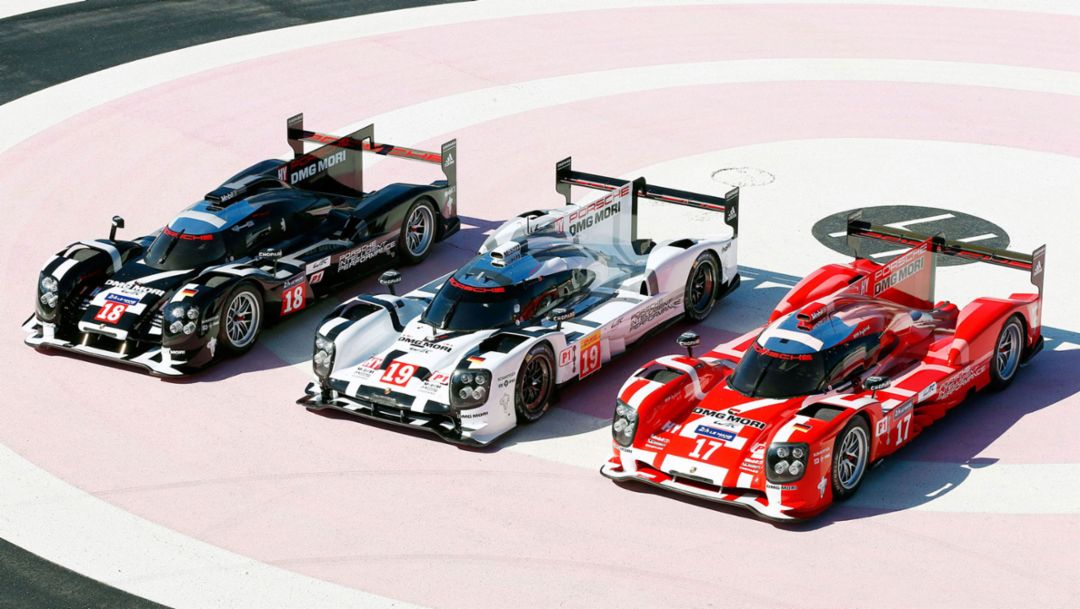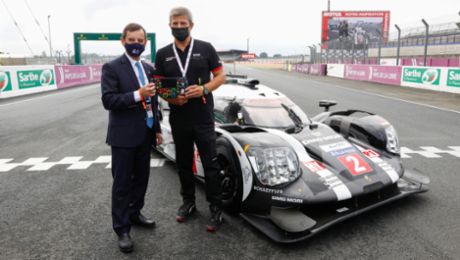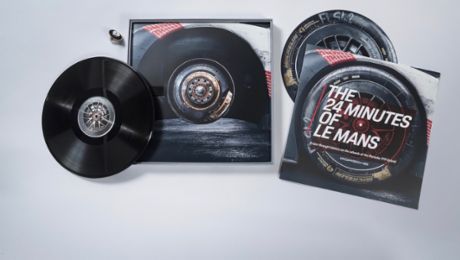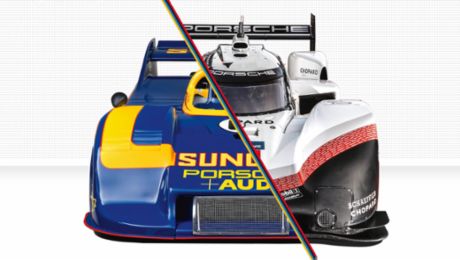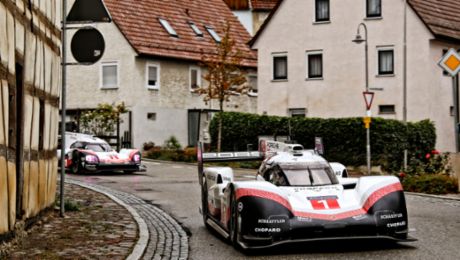An advance party of 12 people is setting up the two-storey steel hall behind the garage and also the two-storey container building for storage and the drivers’ rooms. On May 27 the fully loaded team trucks will leave Weissach for their 800 kilometre long journey to the town in the Sarthe department. Eight team members will prepare the garage for the three Porsche 919 Hybrids.
At the same time further build-up teams will set up the Team and Media Hospitality in the paddock, the guest hospitality in the new Porsche Experience Center, the fan area in the so called Village, the guest lounge at the Porsche curves and the rooms above the garage. Plus: a camp for 750 employees from all the Porsche headquarters will be prepared. They will all come to cheer the company’s most extreme cars when they face their ultimate challenge, carrying technology for future road going sports cars. The powerful hybrid race cars, with around 1000 HP, represent an ideal development platform for innovative powertrain engineering.
The „Space Station“ is the nerve centre where all information is gathered
Everything that’s needed to operate the three 919 Hybrids needs to be in place for the official pre-test on May 31. When the race starts, 13 days later, 120 team members, 2,500 media representatives from 49 countries and 270,000 spectators will be on site.
Under the guidance of Fritz Enzinger, Vice President LMP1, it is Team Principal Andreas Seidl who is in charge of all things operational. His location during the race will be what is known internally as the “Space Station” at the front of the garage – the nerve centre where all information is gathered. Working next to Seidl will be Crew Chief Amiel Lindesay. In conjunction with the race engineers, the New Zealander will delegate the tasks to the 19 mechanics via radio. He informs them which tyre set is to be fitted next, how much fuel needs to go into the car and what else has to be done during a pit stop.
“It is impossible to simulate Le Mans”
Seidl is in contact with the cars by radio as well as with the engineers who he talks to by the pit channel and the “Interkomm” channels. Be it the drivers’ comments, the technical state of the cars, tyre choice, pit stop strategy, observation of the weather or the competition – Seidl is the central point for everything. He has to keep a level head, channel all sorts of information and take instant decisions.
The Bavarian is well aware that: “To coordinate three cars means once again a bigger challenge for all of us. The race in Spa gave us a taste of what it takes, but this was only a six-hour event. We have used our 30-hours of testing to play through many eventualities. However, it is impossible to simulate Le Mans – and without a super professional crew you just cannot stay the course successfully.”
The race engineers sit in their covered stands at the pit wall with six screens in front of them. Only the race engineers talk on the radio to the drivers. On a separate pit radio channel and on the Interkomm they touch base with Lindesay, Seidl, other engineers and further team members. There is one such stand per car on the pit wall.
The number 17 red prototype is driven by Timo Bernhard, Brendon Hartley and Mark Webber. At the wheel of the black number 18 are Romain Dumas, Neel Jani and Marc Lieb. The white number 19 car is shared by Earl Bamber, Nico Hülkenberg and Nick Tandy. The Race engineer for the number 17 car is Kyle Wilson-Clarke (Great Britain). In the stand for the number 18 car sits race engineer Mathieu Galoche (France) and for the number 19 car Stephen Mitas (Australia) is in charge. The Australian is also the leading race engineer for all three Porsche 919 Hybrids.
69 people for three cars
Twenty-three people form the crew for each car: race engineer, performance engineer, data engineer, hybrid engineer, engine engineer, systems performance engineer, 12V engineer, software engineer, engine application engineer, gearbox engineer, track aerodynamics engineer, number one mechanic, front axle mechanic, rear axle mechanic, engine mechanic, gearbox mechanic, composite mechanic, electrician, refueller, tyre man, storeman, one mechanic to look after the air hose and the fuel bowser and one spare person. Sixty eight men and one woman (a gearbox engineer) are fully focused on their respective cars.
The 90-page sporting regulations define how a pit stop must be carried out. There is a speed limit of 60 km/h in the pit lane, the car must park at least 50 cm from the wall or from the line marking the limits of the working area, no more than four team members are allowed to push the car into the garage if needed. The car may only restart when parallel to the track in the working area in front of the garage – and, please, with no wheel spin, otherwise a stop and go penalty will be applied.
Clear rules for the pit stops
At all pit stops the engine has to be switched off and during refuelling (tank capacity 68.5 litres) the car has to remain with its wheels on the ground. On the 13.629 kilometre long track in Le Mans the Porsche 919 Hybrid can use a maximum of 4.76 litres of fuel per lap, which results in a range of 14 to 15 laps. Two mechanics are allowed to carry out refuelling, another one has to stay ready with a fire extinguisher and the cut off valve attendant is at his post. At the same time two mechanics are allowed to clean the car’s windscreen, headlights, mirrors and cameras, to pick up recorded data and to earth the car.
A driver change can happen during refuelling, but the time it takes is too long for it to be finished during a pit stop for fuel only. Therefore, driver changes only happen when new tyres are required.
19 seconds for a perfect wheel change
After refuelling a pneumatic jack lifts the car. For the tyre change a maximum of two mechanics are allowed to work on the car at the same time, and only one wheel gun can be used at that time. A second wheel gun and two other mechanics are involved in a relay-like procedure. After clever choreography they speed out of and back into the garage to loosen the wheels, take them off, supply the new ones and secure them. A perfect wheel change at the Porsche Team takes 19 seconds. In Le Mans it is scheduled at the earliest after two stints, at night the teams try to double the interval between tyre changes. Then a driver stays in the car for a period of nearly four hours, which is more than the race distance of two Formula One Grands Prix.
If necessary, extra people are allowed to change the data recorder or the fuel flow metre. In any case, all personnel must be back in the garage before the driver restarts. Then he has only himself to rely on. If a technical problem occurs out on the track, he can only use the basic on-board tool kit.

